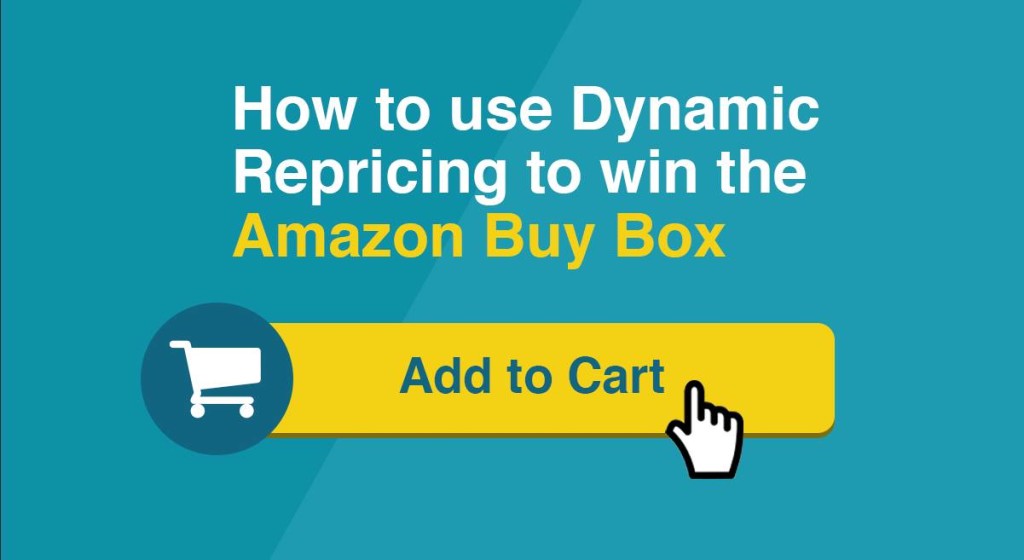Back in 2014, Amazon disclosed it had over 2 million Marketplace Sellers, so you can imagine the intense arena in which third party sellers are fighting today. There’s one thing that separates the winners from the losers: the infamous Buy Box. It accounts for 70–82% of sales on Amazon, so the options are to win the Buy Box or be an afterthought for shoppers.
Before we get too far, it’s important to realize winning the Buy Box is just the first hurdle. Winning once won’t do you much good. But consistently landing there will make the most of the prized retail real estate and spark a significant and sustainable increase in sales.
It’s important to note that the Amazon Buy Box winner is determined by an algorithm and there are numerous factors it takes into account. Amazon is tricky because they don’t tell merchants the exact qualifications they need to win it. Think about it; an exact formula would lead to chaos on such a popular marketplace. Since all the factors aren’t weighted evenly, it’s a matter of balancing the time you spend optimizing each of them.
So how can retailers do this? Here are the most important factors retailers should focus on to make the Buy Box their home as often as possible.
Rating, Feedback, and Performance
Since Amazon knows most shoppers search for an item and purchase it from the retailer occupying the Buy Box, they need to know the merchant who gets that coveted spot is able to deliver.
Being Buy Box eligible means you are a seller who has consistently performed well over time. You need a high seller rating and a low order defect rate. This combination denotes a seller who is likely to provide a satisfactory experience to shoppers. Get your chargeback, return, and exchange rates below 1% whenever possible. You also want substantial feedback from shoppers and should aim for a feedback score of at least 200.
Inventory
If a consumer is excited to buy a product and finds out it’s actually out of stock, it can be a total bummer. You said you had it, they were ready to pay for it, but it didn’t work out the way it should have. Amazon wants to avoid that at all costs. They aim to steer shoppers toward the retailers that will provide the most excellent customer experience Amazon is known for.
In order to do that, inventory levels must be kept consistent to avoid out-of-stock situations. A retailer that can always deliver on its promises is dependable in Amazon’s eyes and they will put those retailers in the running to win the Buy Box. Many retailers use inventory management solutions to make sure they reorder consistently instead of just replenishing stock when they have sold out.
Shipping and Handling Time
The next step after always having stock on-hand is to send it to the shopper as quickly as possible. To be Buy Box eligible, sellers have to ship items within two days of a purchase.
If this sounds like an impossible feat, don’t worry. Amazon has a solution, of course. You’ve heard of Fulfillment by Amazon (FBA), and it’s a double win because, not only are you increasing your chances of winning the Buy Box, but those items can also become Prime eligible.
While FBA comes with a significant price tag, it means Amazon holds onto your stock, sends it out quickly to shoppers, and even handles customer service on those orders. This ensures shoppers get their orders quickly, seamlessly, and courteously. If your seller rating could use a little help, Amazon is there to save the day by making your business more reliable with FBA.
Being Prime eligible is an added bonus that comes along with using FBA because it gives you access to a customer base that spends almost twice as much as non-Prime subscribers per year. They’ll get your items within two days and maybe even within an hour since Amazon expanded Prime Now to 11 additional metro areas.
Amazon has recently taken it a step further by inviting consistent and high volume sellers to merchant-fulfilled Prime. This is exclusively offered to retailers that have a significant warehouse presence and shipping capacity to deliver orders within two days on their own.
No matter what fulfillment option you choose, it’s important to be quick and helpful on all orders.
Price
This is the factor most often associated with a Buy Box victory. A common misconception about winning the Buy Box is that you need the lowest price. In reality, while we don’t know exactly how much weight each Buy Box factor carries, there are many cases when a higher price wins the Buy Box.
There is no perfect price for each product on Amazon. How your prices impact your Buy Box chances varies greatly based on the kind of products you sell and how competitive your category is.
As I mentioned above, Amazon only wants to promote merchants that provide shoppers with an excellent experience. A seller with a low rating and low price isn’t quite as appealing as a seller with a high rating and a slightly higher price. Merchants with low ratings are deemed riskier and shoppers are willing to pay a bit more to make sure they’ll get their items without any speed bumps.
Amazon was the first retailer to be recognized for using a dynamic pricing strategy. This strategy helps retailers set the right price for each product by updating prices based on competitor pricing, supply, demand, and more. Since Amazon likes to maintain its image as a loss leader with low prices, it’s a very competitive marketplace with sellers competing against each other as well as Amazon itself.
So how do retailers price to improve their chances of winning the Buy Box without depleting their margins? The tried-and-true strategy is to list an effective price the first time and update it often. The winning price on Wednesday at noon might be very different than Sunday at midnight, so repricing is the only way to adequately keep up with the market and take into account internal changes. There are four ways to do this.
- Manual Repricing: Very small retailers can manually reprice based on competitor pricing data they gather to stay competitive. However, as the number of SKUs increases, this becomes an impossible task.
- Rule-Based Repricing: Retailers often implement automated solutions that can mine competitive pricing data without the manual work. An automated rule-based system might change the price of an item to the average of a retailer’s top three competitors or always remain one cent below the cheapest competitor. These rules are customizable based on specific business goals.
- Algorithmic Repricing: The algorithmic approach finds the best price over time by monitoring the impact price changes have on your bottom line. It is an ongoing process that irons out the guesswork for you and keeps your prices optimal. This third option has one major feature in common with rule-based repricing: a minimum price to avoid selling below cost, unless that is a deliberate strategy to liquidate items.
- Predictive Buy Box: A more targeted way of perfecting your price is a platform Wiser calls Predictive Buy Box. As for what this strategy means, the name says it all. By taking into account 47 different factors (like seller status, reviews, competitor count, and more), it finds the highest possible price that will still help to land you in the Buy Box. In order to find that optimal price, the platform uses a price similar or equal to the current Buy Box owner’s. But it doesn’t stop there. If you’ve won the Buy Box and have stayed there for the last week, the algorithm will increase your price by 1%. This way it learns the range of prices that are acceptable for the Buy Box in order to maximize margins, while also maximizing sales.
As you’ve likely noticed, pricing on Amazon is very nuanced, but there is one recommendation that holds true no matter what your category is: avoid competing with Amazon solely on price. They will always win the Buy Box and have the resources to sustain a long term price war, if needed. Find ways to compete with Amazon outside of price, like offering unique products. You can’t beat Amazon at its own game, but you can rewrite the rules.
Key Takeaways
Selling on Amazon isn’t for the faint of heart. In such a competitive marketplace, retailers need to evaluate their Buy Box positioning constantly because Amazon frequently rotates Buy Box ownership when there are multiple sellers. On top of that, the market conditions are also constantly changing. Price is the variable that changes most often, but the other factors require substantial attention as well.
A successful long-term Amazon strategy takes into account how flexible the marketplace is and keeps your business nimble. There’s no sitting still on Amazon, and the most effective merchants use this to their advantage.





1 thought on “How to Use Dynamic Repricing to Win the Amazon Buy Box”
Hi Angelica… I am having good metrics, competitive price for listings but, buybox didn’t assign to me.. Could u please some other factors to win buy box?
Thanks!